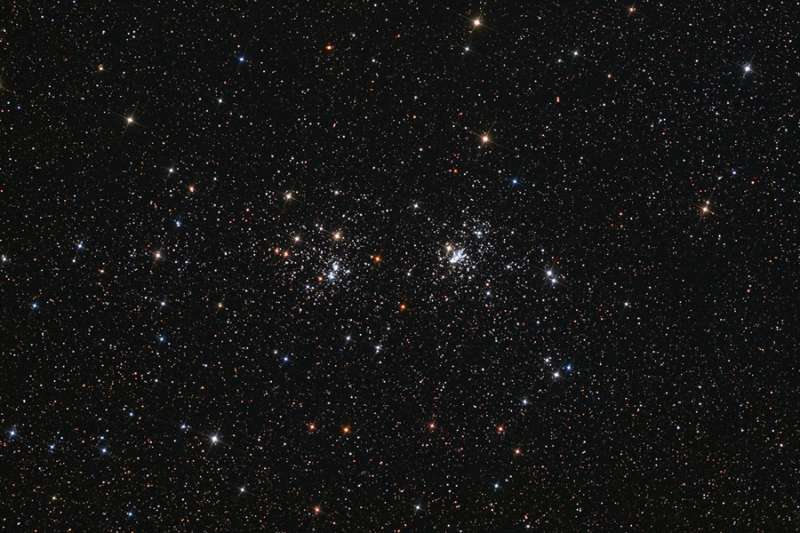
|
Credit & Copyright: Neil Fleming
Explanation:
A
lovely starfield
in the heroic northern constellation
Perseus
holds this famous pair of open or galactic star clusters,
h and Chi
Perseii.
Also cataloged as
NGC
869 (right) and NGC 884,
both clusters are about 7,000 light-years away and
contain stars much younger and hotter than the Sun.
Separated by only a few hundred light-years, the clusters' ages
based on
their individual stars
are similar - evidence that they were likely a product of the same
star-forming region.
Always a rewarding
sight in binoculars,
the Double Cluster is
even visible to the unaided eye from
dark locations.
Star colors (and spikes) are enhanced in this beautiful, wide field,
telescopic image.
|
January February March April May June July August September October November December |
| ||||||||||||||||||||||||||||||||||||||||||||||||
NASA Web Site Statements, Warnings, and Disclaimers
NASA Official: Jay Norris. Specific rights apply.
A service of: LHEA at NASA / GSFC
& Michigan Tech. U.
Based on Astronomy Picture
Of the Day
Publications with keywords: open cluster
Publications with words: open cluster
See also:
- APOD: 2025 August 7 B The Double Cluster in Perseus
- APOD: 2025 April 28 B Gum 37 and the Southern Tadpoles
- Open Star Clusters M35 and NGC 2158
- APOD: 2025 February 25 B M41: The Little Beehive Star Cluster
- APOD: 2025 February 11 B The Spider and the Fly
- APOD: 2024 October 29 B NGC 602: Stars Versus Pillars from Webb
- NGC 7789: Caroline s Rose
